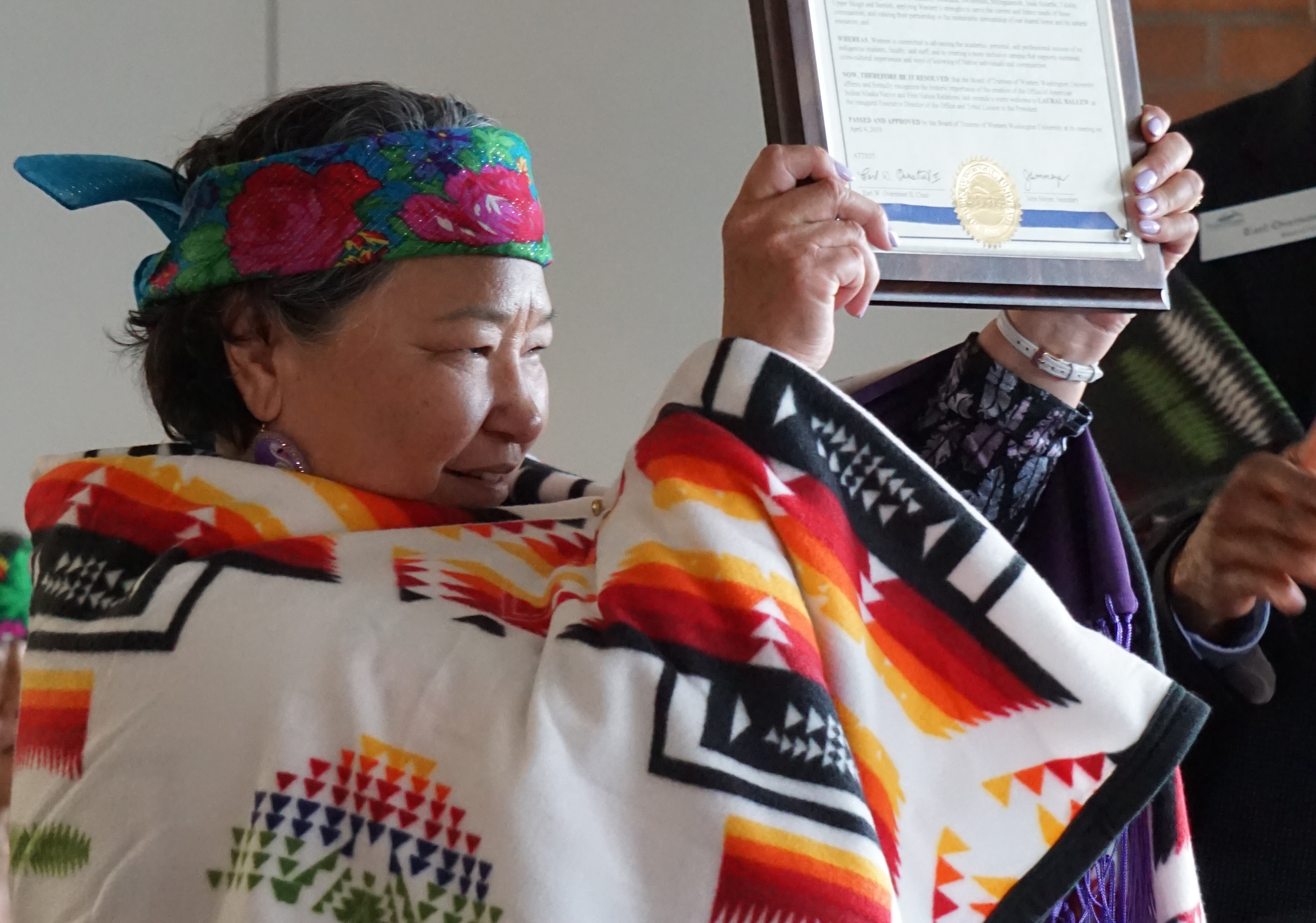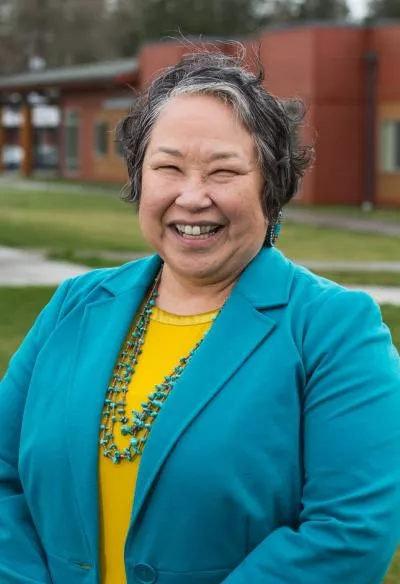Earlier this year, Laural Ballew, ’02, B.A., became Western’s first Executive Director of American Indian/Alaska Native and First Nation Relations and Tribal Liaison to the President. A 40-year resident of the Lummi Reservation, Ballew is a member of the Swinomish Tribe and most recently worked as the chair of the Tribal Governance and Business Management Department at Northwest Indian College.
Today Ballew sees her role as something of a cross between supportive grandmother to Native students (and she’s still a student herself, working toward a doctoral degree) while persistently advocating on behalf of those students—as well as area tribes—at Western.
Why was this position created and why does it matter?
This position was at the top of the list of five requests by the Native American Student Union in a letter dated May 2016. It was President Randhawa who moved forward with this initiative along with a committee of Native faculty, staff and students. The Board of Trustees passed a resolution establishing the Tribal Liaison office back in April, which is historic for this institution and for Native communities.
The Native Students acknowledged the importance of a Tribal Liaison to support American Indian/Alaska Native and First Nation students with academics, retention and opportunities to provide for their well-being. We owe a lot of this position to the hopes and aspirations of the Native students who were strong enough to believe in themselves and in what they needed to succeed—and what this institution needed to succeed.
It’s also important because of the territory in which Western resides, the Lhaq’temish (Lummi) territory. Western now has a land acknowledgement statement we use at events and is also posted on our website. Adding the Tribal Liaison position puts action behind the land acknowledgement statement.
What unique life experiences do you bring to this job?
First and foremost, I am a Native woman, mother, grandmother and great-grandmother. My traditional names are Ses Yehomia and tsi kats but soot. I feel I have been trained from a very young age by my own grandmothers to prepare myself for this position. Education has always been an important goal in my life and my grandparents always wanted me to succeed in my education. I am proud to be answering their prayers.
I consider myself a non-traditional student—I returned to college when I was in my 40s. I graduated from Northwest Indian College with a two-year degree in business administration, then from Western with a B.A. in American cultural studies. By the time I graduated Western, my oldest son had enrolled as a freshman. (That doesn’t happen too often in families, and for sure not in Native families!) I went on to The Evergreen State College where I earned a Master’s in Public Administration in tribal governance. I am currently working on my Ph.D. from Te Whare Wānanga o Awanuiārangi, a Maori university in New Zealand.
I know full well the challenges our Native students face every day because I have been there, and it was hard. I hope that I can be a role model and someone that Native students can look up to and see they can make their dreams become a reality.
What are your priorities in your work to improve the experience for Native students at Western?
Well, number one, I carry that letter that the Native students sent to then-President Shepard. The number-one request was the tribal liaison. Number two was a traditional Coast Salish longhouse. Three was to certify Native tribal enrollment or descendency at Western in order to ascertain an accurate count of our Native student population. Four was funding for the annual pow-wow, and five was government-to-government training.
I use those five objectives as pretty much my first-year plan. I’ll add to my list every year, but those are the five things that I'm working on right now.
How will you know you’ve succeeded?
When I was at NWIC I would always tell my faculty and staff, “every day our students walk in the door is a success.” We don’t know what challenges they are facing before they come to class. If they can make it to class, that is a success. It’s the small steps we want to recognize.
The other success I see is at graduation. I love watching our students when they walk to get their diplomas. They are carrying with them all the hopes and dreams of their ancestors, their families and the future generations. That diploma is more than just a piece of paper. It’s an acknowledgment that we as Native people are still here. We’re still representing. And Native students deserve to have their voices heard. And for me, as a professional, I will see success when I can continue to advocate for those voices and bring those voices to the table.

